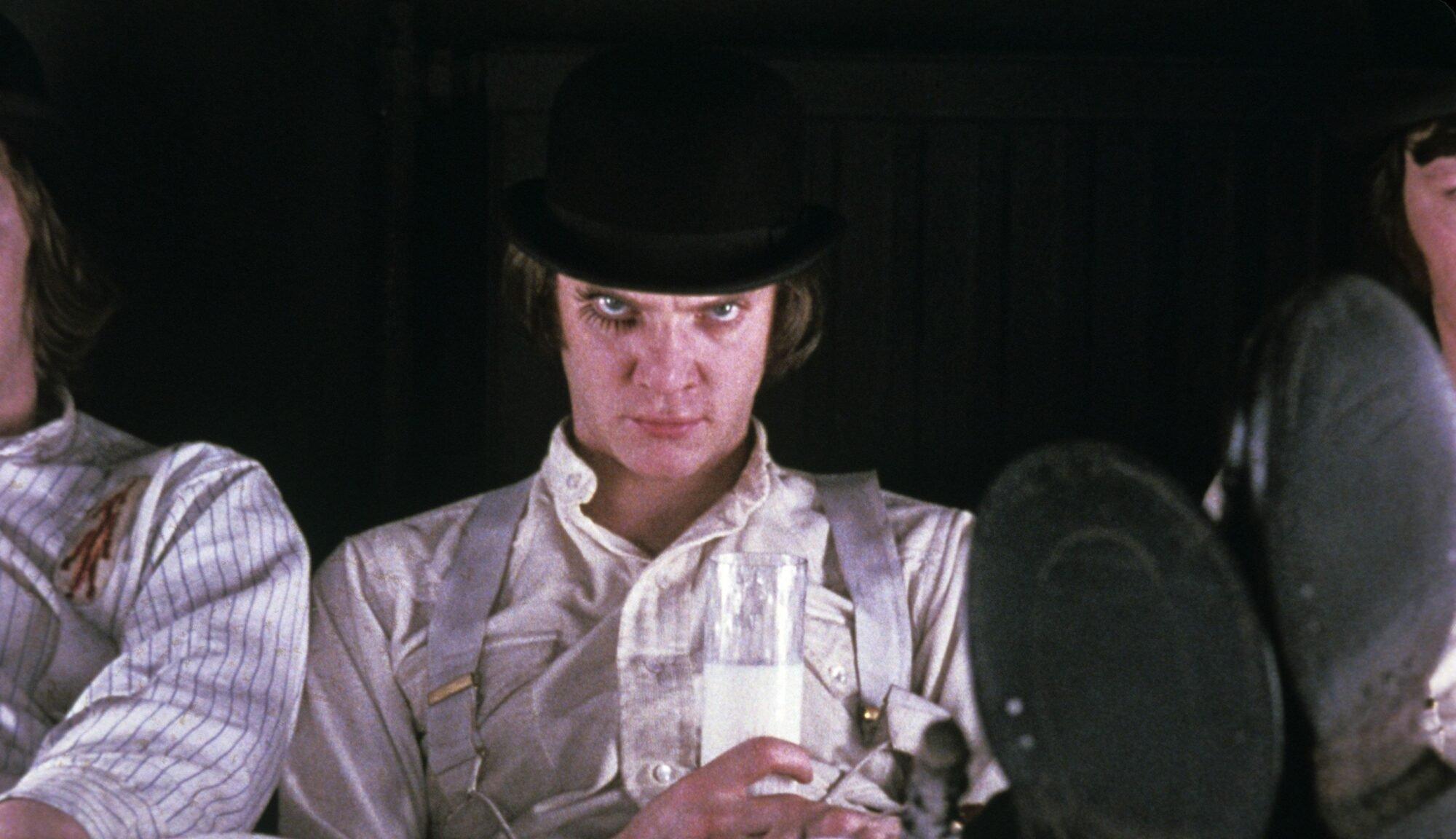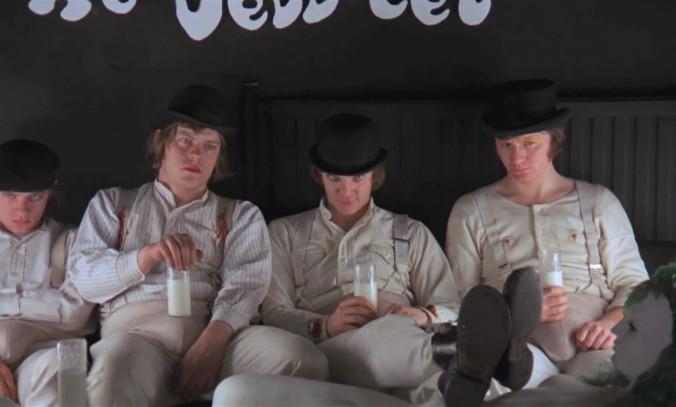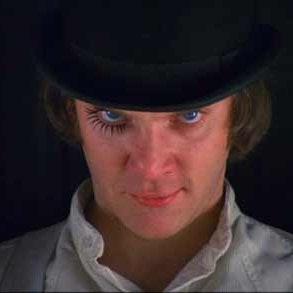Title: A Timeless Mechanism: The Cultural Relevance of A Clockwork Orange
Introduction:
Since its publication in 1962, Anthony Burgess‘s A Clockwork Orange has been both a magnet for controversy and a touchstone for discussions on free will, morality, and the nature of violence. The novel’s vivid depiction of a dystopian future, coupled with its exploration of the tension between individual autonomy and state control, has sparked debate among readers, scholars, and critics alike. This article seeks to analyze whether A Clockwork Orange remains culturally relevant in today’s rapidly evolving society or if it has become an artifact of a bygone era. By examining the novel’s themes, linguistic innovations, and its impact on popular culture, we aim to assess its continued resonance and the ways in which it reflects—or fails to reflect—the complexities of the modern world. Through this analytical lens, we will explore whether Burgess’s work still holds the power to provoke thought and inspire discourse, or if it has been overshadowed by contemporary narratives and concerns.
Cultural Impact of A Clockwork Orange in Contemporary Society
The influence of A Clockwork Orange on contemporary society remains a subject of debate, resonating in various cultural dimensions. Its exploration of free will, violence, and societal conditioning continues to echo in today’s discussions on ethics and governance. Stanley Kubrick’s film adaptation has particularly left an indelible mark on pop culture, inspiring a myriad of artistic expressions, from fashion to music. Despite its release over five decades ago, its dystopian themes resonate with current societal anxieties, such as the rise of surveillance states and the ethical implications of behavioral modification technologies.
- Fashion and Art: The film’s iconic imagery has influenced numerous fashion designers and artists, who draw on its bold visuals and themes to challenge and provoke audiences.
- Music: Bands and musicians frequently reference its themes and visuals, utilizing its stark, provocative style to convey messages of rebellion and non-conformity.
- Political Discourse: The novel’s critique of authoritarian control finds parallels in contemporary debates about state power and individual freedoms.
In essence, while some may view the novel and its cinematic adaptation as products of their time, their cultural footprint suggests a continued relevance, serving as a lens through which we examine and question the balance between societal control and personal autonomy.
Analyzing Themes of Violence and Free Will in Modern Context
In Anthony Burgess’s dystopian novel, A Clockwork Orange, the interplay between violence and free will is not just a central theme but a lens through which the characters’ actions are scrutinized. The protagonist, Alex, embodies the tension between these concepts, oscillating between unbridled aggression and the manipulated semblance of choice. In today’s society, where discussions around systemic violence and individual autonomy are prevalent, the novel’s exploration of these themes remains pertinent. Modern readers might find parallels in the current debates over the ethics of behavioral conditioning and the justice system’s role in reforming versus punishing offenders.
- Violence as a Social Construct: The novel suggests that violence is not merely an individual failing but a reflection of societal influences. Contemporary discussions often echo this sentiment, examining how social and economic factors contribute to aggressive behaviors.
- Free Will vs. Determinism: In a world where technology increasingly influences decision-making, the novel’s question of whether true free will can exist within a controlled environment is more relevant than ever.
Through these lenses, A Clockwork Orange continues to challenge readers to consider how much autonomy individuals truly possess in a world that seeks to regulate behavior, questioning whether societal interventions are a cure or a symptom of deeper issues.

The Evolution of A Clockwork Oranges Reception Over Time
The journey of A Clockwork Orange through the corridors of cultural critique is a testament to its dynamic legacy. Initially met with a mix of admiration and revulsion, Anthony Burgess’s novel and Stanley Kubrick’s film adaptation both sparked intense debate over their depiction of violence and free will. During the 1970s, the narrative was seen as a bold critique of societal control, a cautionary tale that resonated with the counterculture movements of the time. However, it also faced criticism for its graphic content, leading to its controversial status. As the years progressed, the conversation shifted from its shocking elements to its deeper philosophical questions, such as the nature of evil and the role of individual choice versus state intervention.
Today, its relevance is assessed through multiple lenses:
- Literary Influence: The novel’s innovative use of language, particularly its invented slang “Nadsat,” continues to be studied in academic circles for its linguistic creativity.
- Film and Media: Kubrick’s adaptation remains a staple in film studies, often cited for its stylistic bravado and narrative boldness.
- Social Commentary: Modern audiences reflect on its themes in the context of contemporary issues like surveillance, censorship, and the ethical boundaries of state power.
While some argue that its provocative elements have lost their edge in an era of desensitized media consumption, others believe that its core questions about morality and autonomy still resonate, proving that the work continues to challenge and inspire discourse across generations.

Recommendations for Engaging with A Clockwork Orange Today
Engaging with Anthony Burgess’s A Clockwork Orange in today’s context requires a nuanced approach that acknowledges both its historical significance and its controversial elements. Here are some recommendations for readers and viewers:
- Understand the Historical Context: Recognize the period in which the book was written—1962. This was a time of significant social change and experimentation, which influenced Burgess’s exploration of free will and state control.
- Analyze the Themes: Dive into the core themes of the novel, such as the tension between individual freedom and societal order. Consider how these themes resonate with current debates on personal autonomy versus collective security.
- Critically Assess the Language: The novel’s use of “Nadsat,” a fictional slang, is integral to its narrative style. Reflect on how this language choice serves as both a barrier and a bridge for understanding the protagonist’s world.
- Explore Adaptations: Consider how various adaptations, including Stanley Kubrick’s film, interpret and present the novel’s themes. Analyze how these adaptations address or amplify the original work’s cultural and ethical questions.
- Engage in Discussions: Participate in or initiate conversations about the novel’s relevance today. These discussions can provide insights into how different generations perceive the novel’s portrayal of violence and control.
By approaching A Clockwork Orange with a critical eye and an open mind, modern audiences can uncover layers of meaning that continue to provoke thought and discussion.
